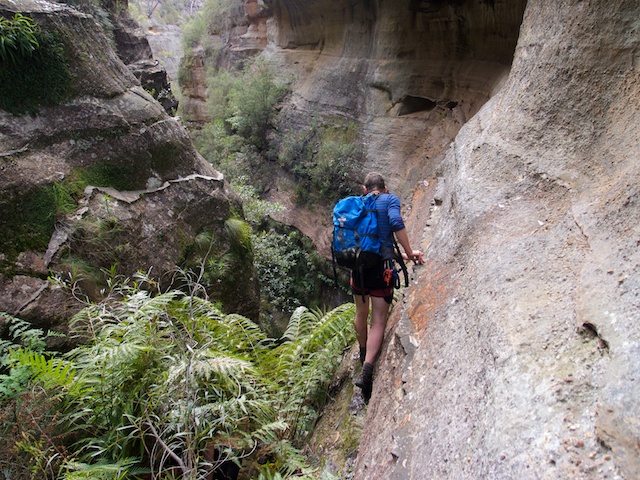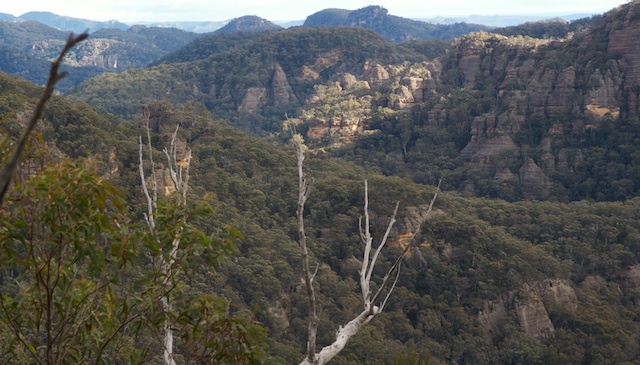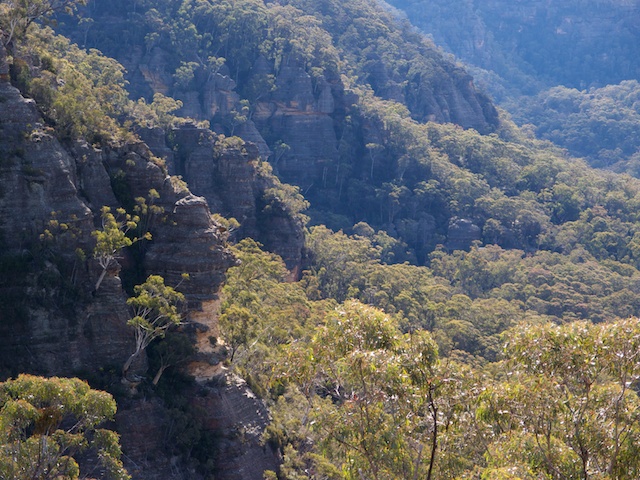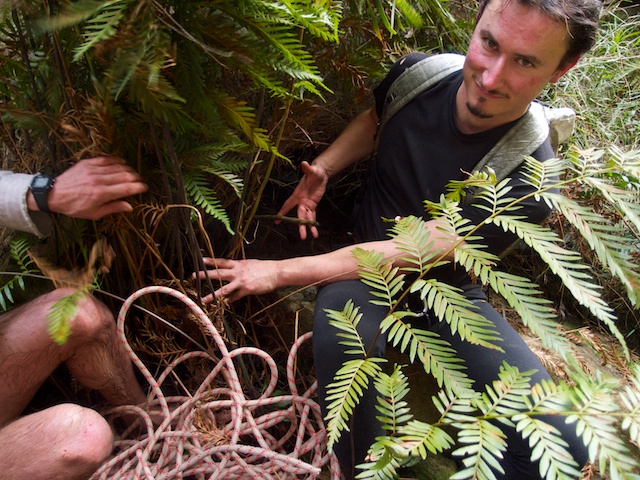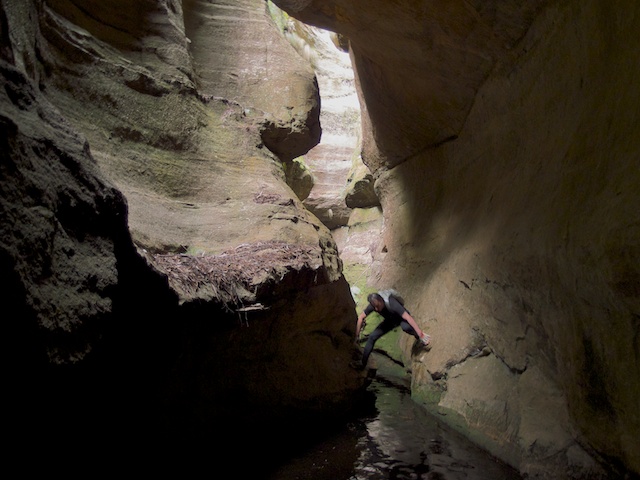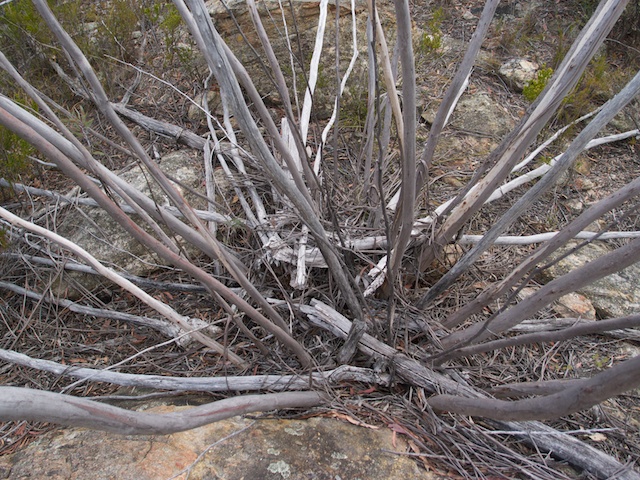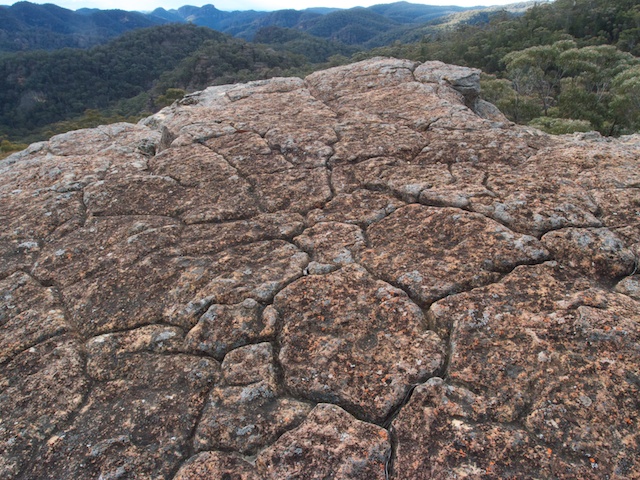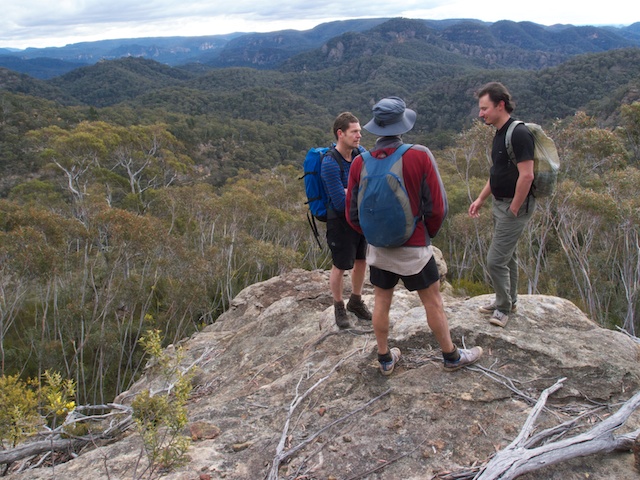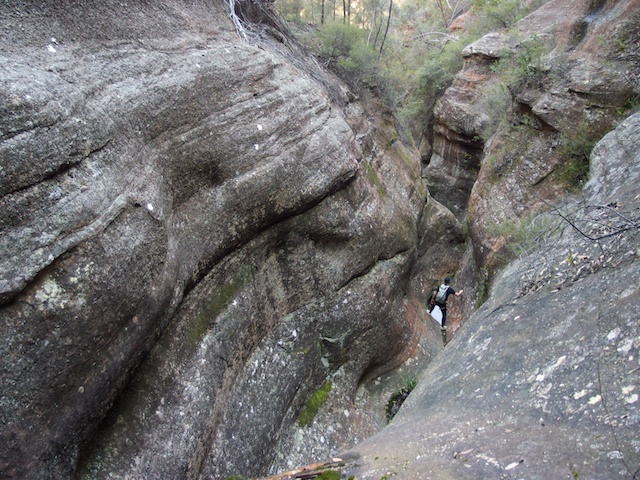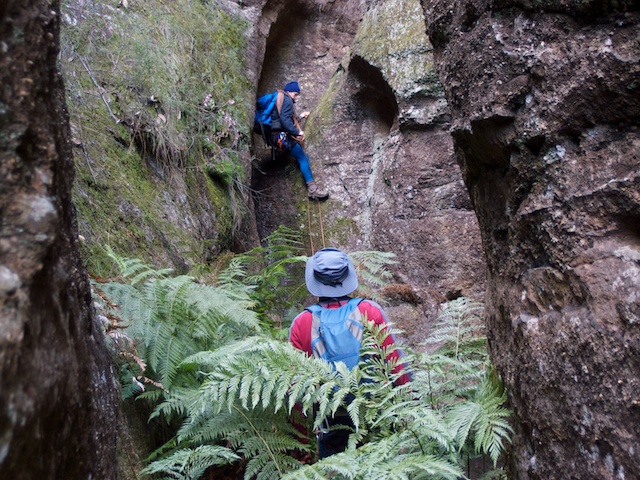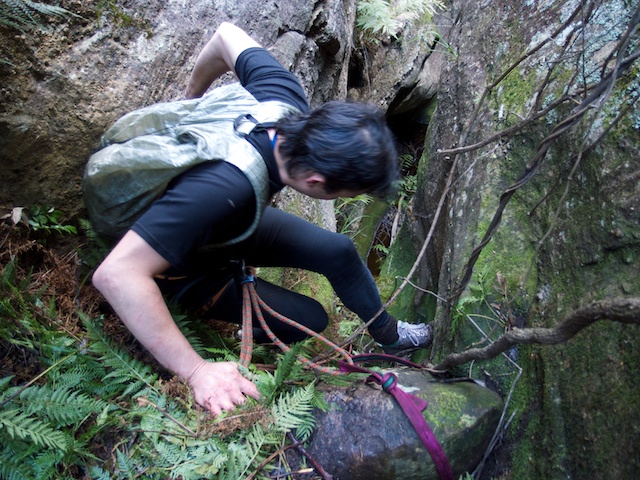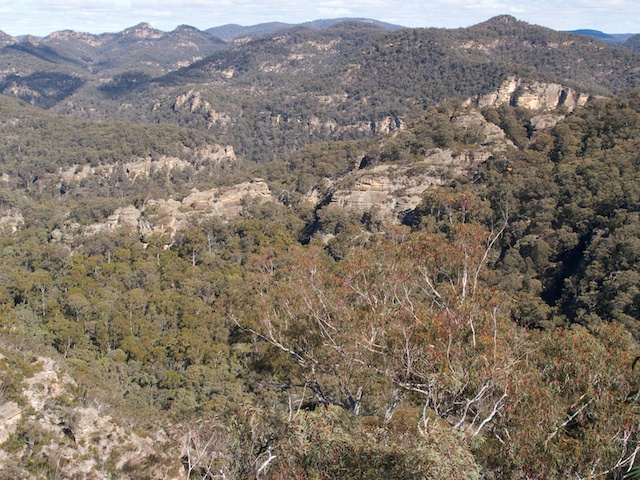A friend, Rik, was keen for a winter canyoning trip. Not content on visiting familiar canyons – he wanted to head out to a remote part of the Greater Blue Mountains and explore for something new.
A few years ago, on a winter walking trip, Rik together with Rob and Zen had found a canyon in a creek near their campsite. They had headed down into the headwaters of the creek to get water, and when they explored a bit downstream they found themselves at the top of an interesting canyon. They had no ropes for abseiling with them so were unable to proceed.
Many years ago, I too had been in that area, and we had gone down a nearby creek. It too had been canyon – it was nice but not that spectacular.
Anyway, Rik talked a few of us into a new trip. It was winter. The forecast was cold (snow was possible). Any canyon could be wet. In winter that is not pleasant. But – we thought – not that many canyons in the Blue Mountains are really that wet. And many in the more northern parts tend to be drier. So five of us set out – Rik, Rob, two Michaels and myself.
Using knowledge from previous trips, we were able to work out a good route to the top of the canyon. This involved passing through some very rugged country. But all the passes worked out fine and we found ourselves at a nice campsite above the canyon by lunchtime on the saturday.
As well as the canyon that Rik and Rob had party explored there were several other creeks nearby that looked promising.
After setting out camp and having lunch, four of us set out for the first canyon. One of the Michaels only came down into the creek to get water and then returned to the camp. He wasn’t feeling 100% so thought it wise to sit the canyon out.
Sure enough after some scrambling around deep pools we arrived at the main slot of the canyon. The canyon was quite impressive with a nice formation and deep slot. It had two abseils and many climb downs. On the second abseil (25m), we found a sling. This was a surprise – as we had expected to be doing a first descent. There had been no signs of previous parties above. If any reader recognises the canyon – then please get in touch.
Not long after this abseil was a long pool. It was dark and looked deep. No one was too keen to plunge in. It was far too wide to bridge. However, it was not bad – no more than waist deep. Not too far after this the canyon opened up.
We climbed up a convenient pass nearby and headed back to camp. On the way – we admired excellent views of the surrounding very rugged country. Tortuous ridge systems tantalised the eye with their delicate nuances.
Sunday morning dawned a fine day and much warmer than the day before had been. Our plan was to explore some more creeks and then after lunch head back to the car.
The first creek we had designated to check out was indeed another canyon. It was shorter than the previous one, but a lot more technical. It had four abseils – the last two of which had no belay points. To get through we had to throw down logs which Rik was able to wedge underwater in a pool. A sling around them them was satisfactory to abseil off as long as you didn’t try and lift the logs up. Below that was another short abseil – where we spent a lot of time digging the floor of the creek in order to set up a thread belay using a chockstone.
This didn’t leave us a lot of time to explore more creeks so we reluctantly headed back to camp to have lunch and pack up. We then headed back via the same route we had used the day before.
This was a great weekend – and a good adventure. Thanks to Rik for talking us into coming. Also many thanks to the local landholder for letting us park on his property and walk through his land at the start and end of the trip – and for his great hospitality!!
More photos can be found on my website here.

